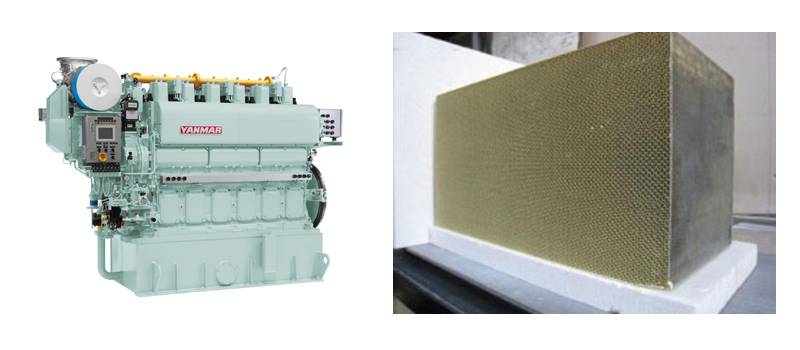Japanese Trio Connects on Project to Reduce Methane Slip by 70%

The methane slip reduction system will be installed in a coal carrier built at the Namura Shipbuilding and operated by MOL for demonstration of the methane slip reduction technology. Source: MOL
As the global shipping industry is under the microscope to reduce emissions, three Japanese leaders in the maritime space: Hitachi Zosen, Mitsui O.S.K. Lines, Ltd.(MOL) and Yanmar Power Technology Co., Ltd. (YPT), have targeted methane slip as an area of study via its "Development of Methane Slip Reduction Technology from LNG Fueled Vessels by Improving Catalysts and Engines", with Hitachi Zosen serving as the managing company in the "Development of Next Generation Vessels Project" publicly solicited by the New Energy and Industrial Technology Development Organization (NEDO) under the Green Innovation Fund.
With maritime decarbonization efforts in full swing, LNG as a maritime fuel has been a popular option due to its effect of reducing CO2 emissions. But LNG is still widely regarded as a bridge fuel to the future, as engines using LNG can be prone to the problem of methane slip, where unburned fuel is expelled in the exhaust. So reducing methane slip is a pressing issue in engine design.
Via the project the partners aim to achieve a methane slip reduction rate of more than 70% for LNG-fueled vessels over a six-year period from FY2021 to FY2026.
The companies believe the reduction will be achieved by combining methane oxidation catalysts and engine improvements. YPT will also commission Namura Shipbuilding Co., Ltd., together with Hitachi Zosen and MOL, to establish the technology to install the system developed in this research on actual ships.
The methane slip reduction system will be installed in a coal carrier built at the Namura Shipbuilding and operated by MOL for demonstration of the methane slip reduction technology.
 Left: Yanmar's 6EY22ALDF dual fuel engine; Right: Hitachi Zosen's Methane Oxidation Catalyst. Images courtesy Yanmar, Hitachi Zosen
Left: Yanmar's 6EY22ALDF dual fuel engine; Right: Hitachi Zosen's Methane Oxidation Catalyst. Images courtesy Yanmar, Hitachi Zosen



